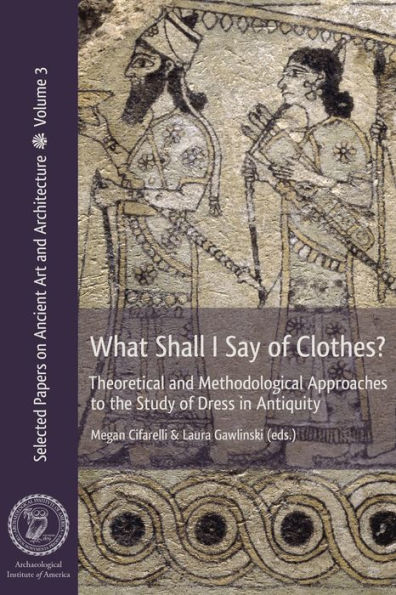What Shall I Say of Clothes? Theoretical and Methodological Approaches to the Study of Dress in Antiquity
The essays in this volume engage explicitly in a variety of theoretical and methodological strategies for the interpretation of dress, dressed bodies, and their representations in the ancient world. Focusing on personal ornaments, portraiture, and architectural sculpture, the collected papers investigate the visual, somatic, and semantic significance of the act of getting dressed, what it meant to be dressed in various ways, and how dress contributed to and shaped identities in antiquity. Authors draw from a wide range of disciplinary frameworks, integrating literary and archaeological evidence, experimental archaeology, social theory and the study of iconography. This volume spans a broad area both geographically and chronologically, bringing the ancient Near East into dialogue with the classical world from prehistory through late antiquity. The breadth and inclusivity of this volume provide a strong theoretical and methodological foundation for the collaborative study of the dynamic role of dressed bodies and images that depict them. Contributors are Emma L. Baysal, Eric Beckmann, Ayse Bursali, Alexis Q. Castor, Megan Cifarelli, Laura Gawlinski, Maura Heyn, Neville Mc Ferrin, Kiersten Neumann, Hadi Ozbal, Rana Ozbal, Josephine Verduci, Alissa Whitmore, Elizabeth Wueste, and Baris Yagci.
"1125110563"
What Shall I Say of Clothes? Theoretical and Methodological Approaches to the Study of Dress in Antiquity
The essays in this volume engage explicitly in a variety of theoretical and methodological strategies for the interpretation of dress, dressed bodies, and their representations in the ancient world. Focusing on personal ornaments, portraiture, and architectural sculpture, the collected papers investigate the visual, somatic, and semantic significance of the act of getting dressed, what it meant to be dressed in various ways, and how dress contributed to and shaped identities in antiquity. Authors draw from a wide range of disciplinary frameworks, integrating literary and archaeological evidence, experimental archaeology, social theory and the study of iconography. This volume spans a broad area both geographically and chronologically, bringing the ancient Near East into dialogue with the classical world from prehistory through late antiquity. The breadth and inclusivity of this volume provide a strong theoretical and methodological foundation for the collaborative study of the dynamic role of dressed bodies and images that depict them. Contributors are Emma L. Baysal, Eric Beckmann, Ayse Bursali, Alexis Q. Castor, Megan Cifarelli, Laura Gawlinski, Maura Heyn, Neville Mc Ferrin, Kiersten Neumann, Hadi Ozbal, Rana Ozbal, Josephine Verduci, Alissa Whitmore, Elizabeth Wueste, and Baris Yagci.
24.95
In Stock
5
1

What Shall I Say of Clothes? Theoretical and Methodological Approaches to the Study of Dress in Antiquity
240
What Shall I Say of Clothes? Theoretical and Methodological Approaches to the Study of Dress in Antiquity
240Paperback
$24.95
24.95
In Stock

Product Details
| ISBN-13: | 9781931909341 |
|---|---|
| Publisher: | Archaeological Institute of America |
| Publication date: | 01/03/2017 |
| Series: | Selected Papers on Ancient Art and Architecture , #3 |
| Pages: | 240 |
| Product dimensions: | 5.94(w) x 8.94(h) x (d) |
About the Author
From the B&N Reads Blog
